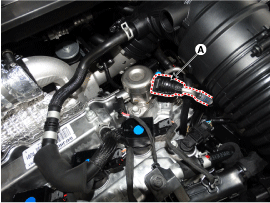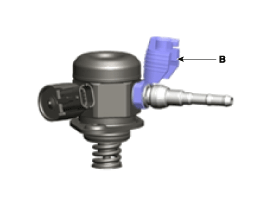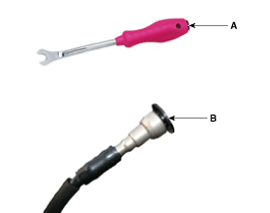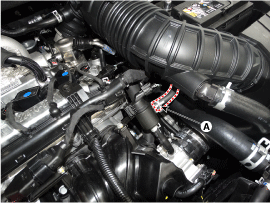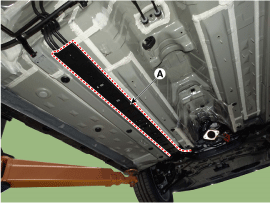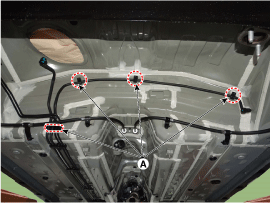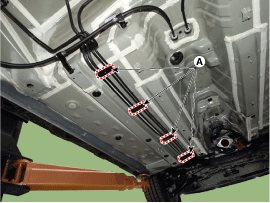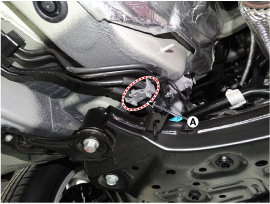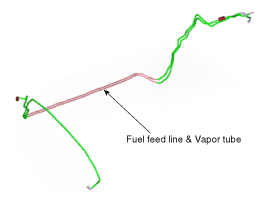Hyundai Kona: Fuel Delivery System / Fuel Line Repair procedures
Hyundai Kona (OS) 2018-2025 Service Manual / Engine Control / Fuel System / Fuel Delivery System / Fuel Line Repair procedures
| Removal |
| 1. |
Release the residual pressure in fuel line.
(Refer to Fuel Delivery System - "Release Residual Pressure in Fuel
Line")
|
| 2. |
Turn the ignition switch OFF, and then remove battery (-) terminal.
|
| 3. |
Disconnect the fuel feed tube quick-connector (A).
|
| 4. |
Disconnect the vapor hose (A) which is connected from the PCSV.
|
| 5. |
Lift the vehicle.
|
| 6. |
Remove the fuel tank.
(Refer to Fuel Delivery System - "Fuel Tank")
|
| 7. |
Remove the fuel and brake line protector (A).
|
| 8. |
Remove the fuel feed line & vapor tube line fixing clips (A).
|
| 9. |
Remove the fuel line.
|
| Installation |
| 1. |
Install in the reverse order of removal.
|
 Fuel Pressure Sensor (FPS) Repair procedures
Fuel Pressure Sensor (FPS) Repair procedures
Inspection
1.
Connect the GDS on the Data Link Connector (DLC).
2.
Check the output voltage of fuel pressure sensor (FPS).
...
 Filler-Neck Assembly Repair procedures
Filler-Neck Assembly Repair procedures
Removal
1.
Turn ignition switch OFF and disconnect the negative (-) battery cable.
2.
Open the fuel filler door.
3.
...
Other information:
Hyundai Kona (OS) 2018-2025 Service Manual: Dynamic Damper Components and components location
Components
1. BJ
assembly
2. BJ circlip
3. BJ boot band
4. BJ boot
5. Dynamic
damper band
6. Dynamic damper
7. Shaft
8. TJ boot band
9. TJ
boot
10. Spider assembly
11. Retainer ring
12. TJ case
13. Housing
c ...
Hyundai Kona (OS) 2018-2025 Service Manual: Battery Specifications
Specification
â–·AGM60L-DIN
Item
Specification
Capacity [20 hr / 5 hr] (AH)
60/48
Cold Cranking Amperage (A)
640 (SAE/EN)
Reserve Capacity (Min)
100
Spec ...
© 2018-2025 www.hkona.com

